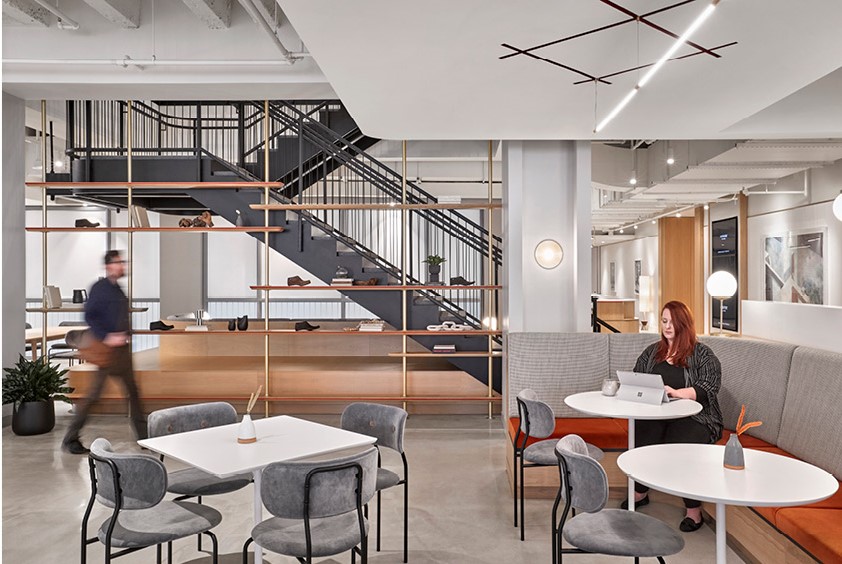When creating return-to-work plans, FMs need to remember the workplace must take on a completely different role in order to maintain its value.

This article was originally published by FM Link.
The workplace is in an interesting position right now as the world is trying to determine how it will change for the long term. We know things will not be the same as they were pre-pandemic. Many are waiting for some semblance of consistent order to make a plan, but the workplace has shifted and is still in the process of transitioning. Organizations are starting to return, but most of the workforce remains out of the office. The challenge has now become the longer we remain out, fewer people will return.
The virus mutates. We will be dealing with new variants and will need to protect people. You have four choices:
- Get vaccinated and get back to the office
- Wear a mask and get regular COVID tests
- Provide private workspaces or social distance
- WFH
Politics aside, it’s pretty simple. Pick which one is best for your people and organization. You could argue that there is another option which is to shut down everything, but is that really a feasible choice?
The Future of Work
We will adapt, but the tougher question is: how? Many organizations are struggling to determine how their office space will function and define what the next iteration will look like. For most professional organizations, there has been a profound shift in the thinking about the office and the acceptance of remote work.
Many of us have been working remotely for over 18 months and we have seen that work is getting done. People are communicating differently as a result of using technology that existed but was not fully utilized. The question becomes: how does leadership convey their mission and vision? Is this done in a group setting in a physical environment, or through our smart phones?
We then need to consider how teams or departments are organized and how individuals collaborate and share ideas. In most organizations, there is a range of tasks to be done. Some are pretty straight forward, like accounting. Others are more complex and require a high level of interaction, like engineering.
There were many calls to get back to the office and we saw a broad range of responses from both leadership and the workforce. We were exposed to a new set of conditions, lives and priorities have changed, and the way that we work has changed. Where and how people work both individually and collectively has exploded into a variety of different options and choices and are continuing to evolve rapidly.
It’s Time to Take A Step Back
Some organizations are resorting to “the way we have always done it” solutions, but things have changed enough to warrant stepping back and reconsidering how an organization wants to bring people together. Most organizations are trying to define a desirable and acceptable environment that can accommodate their total workforce.
The term “hybrid office” is a new inconsistently defined work environment, and it opens the door to a workplace with more choices than we had pre-pandemic. A hybrid office might mean a variety of things:
- A fixed set of days or hours in the office
- Flexibility to when and where
- WFH when not meeting with others
- Coworking and 3rd places
Conversations are changing the very nature of the office. There are a lot of questions being asked and experiments being done. But, if we take a step back, are they fundamentally looking at what is the office and what function it serves? Do people really need to be there all the time? What is its real value and how is that measured?
The workplace was driven by cost based and efficiency metrics in the past. When we take a step back, those metrics will probably still be used, but their value as a measure of performance has diminished considerably. Productivity and efficiency measures are elusive, especially relative to the workplace.
Organizations generally have their own productivity measures based on output or revenue. Space and efficiency have generally been based on people or seats per SF. These measures are more focused on the utilization of the real estate rather than innovation, organizational goals, the work being done, or the value that the workplace provides.
Talent still remains a top priority for most organizations. Another important consideration is how people feel about their work environment. There are several schools of thought about the relationship between people and the workplace. The physical office is still critical to attracting talent, training and supporting that talent.
The Bottom Line
While very different, the office is still important for those who are working from home. It is still a place to meet, learn, collaborate, and socialize. But that environment must be conducive to the work and better than the environment they have at home.
The bottom line is that the friction that an individual might endure at every stage of their experience getting to the office matters much more. Multiple layers of interaction, transportation, security, support, service, tools, food, health, and safety need to be successfully managed. Things like getting to work, transportation and parking, internet connection speed, a good cup of coffee, or wearing a mask now have a big impact on the experience. What matters is that the individual is comfortable, supported, and has an enjoyable experience.
This thinking is born out of what has been coined as ‘The Great Resignation’. The workplace now must take on a completely different role in someone’s life in order to maintain its value.



